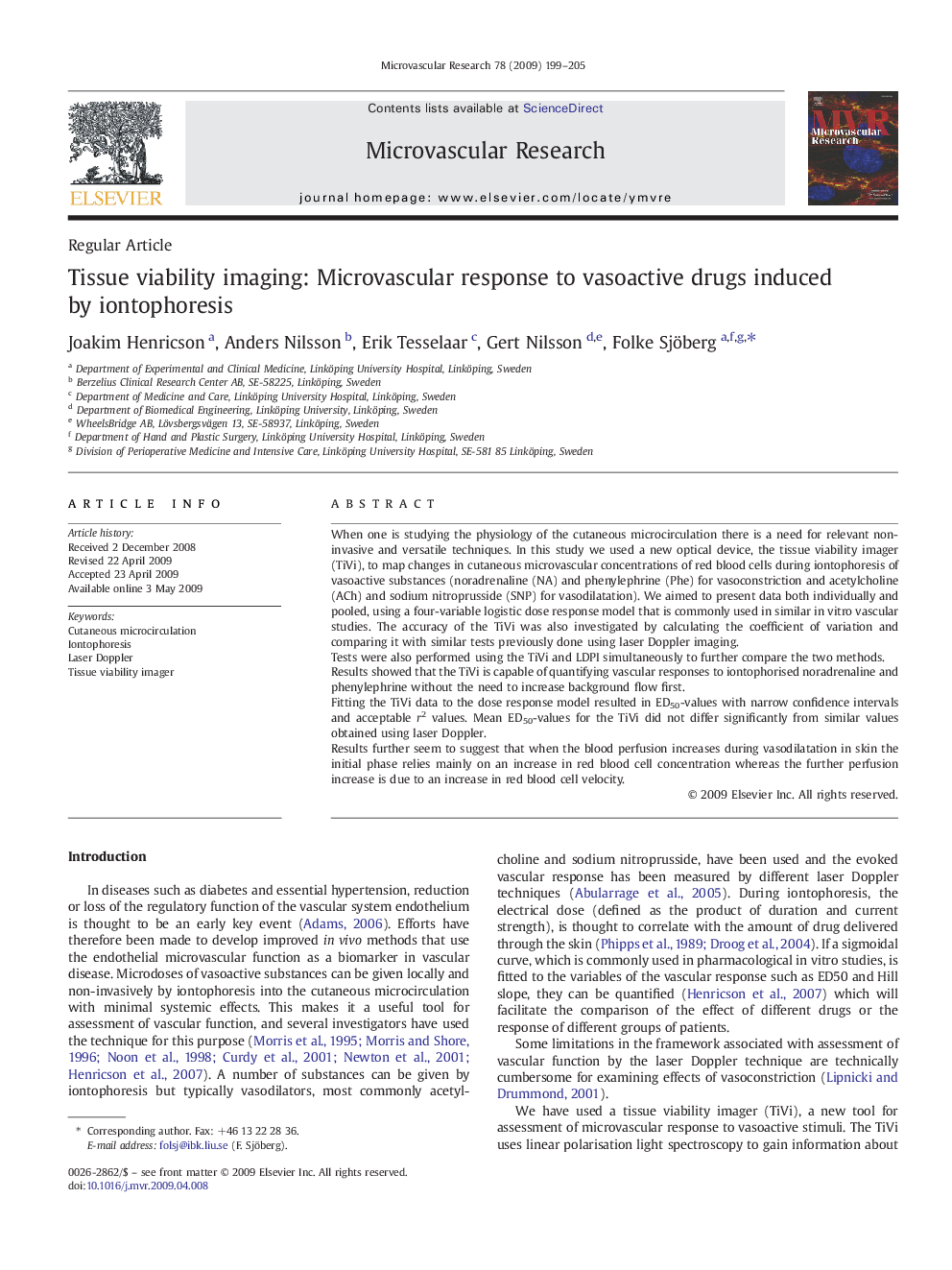| Article ID | Journal | Published Year | Pages | File Type |
|---|---|---|---|---|
| 1995157 | Microvascular Research | 2009 | 7 Pages |
When one is studying the physiology of the cutaneous microcirculation there is a need for relevant non-invasive and versatile techniques. In this study we used a new optical device, the tissue viability imager (TiVi), to map changes in cutaneous microvascular concentrations of red blood cells during iontophoresis of vasoactive substances (noradrenaline (NA) and phenylephrine (Phe) for vasoconstriction and acetylcholine (ACh) and sodium nitroprusside (SNP) for vasodilatation). We aimed to present data both individually and pooled, using a four-variable logistic dose response model that is commonly used in similar in vitro vascular studies. The accuracy of the TiVi was also investigated by calculating the coefficient of variation and comparing it with similar tests previously done using laser Doppler imaging.Tests were also performed using the TiVi and LDPI simultaneously to further compare the two methods.Results showed that the TiVi is capable of quantifying vascular responses to iontophorised noradrenaline and phenylephrine without the need to increase background flow first.Fitting the TiVi data to the dose response model resulted in ED50-values with narrow confidence intervals and acceptable r2 values. Mean ED50-values for the TiVi did not differ significantly from similar values obtained using laser Doppler.Results further seem to suggest that when the blood perfusion increases during vasodilatation in skin the initial phase relies mainly on an increase in red blood cell concentration whereas the further perfusion increase is due to an increase in red blood cell velocity.
